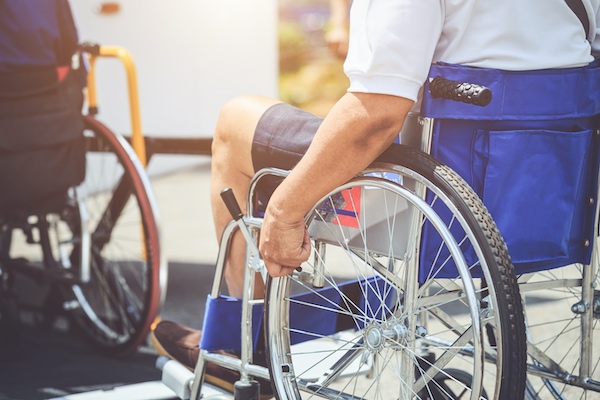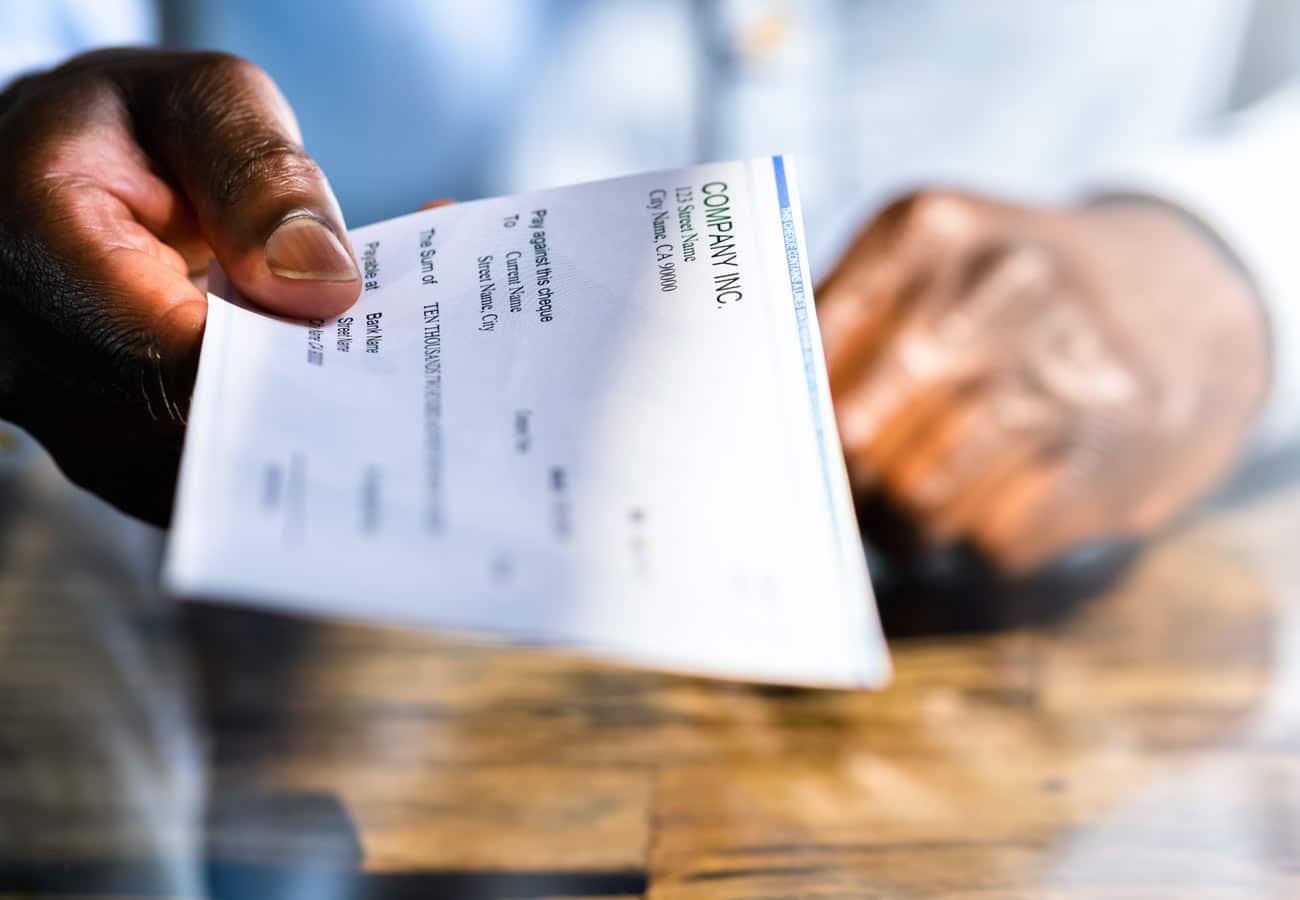When you’re injured due to someone else's negligence, the aftermath can be overwhelming. Medical bills pile up, and the stress of recovery can be compounded by the uncertainty of how to navigate the legal landscape. Understanding the nuances of personal injury cases is crucial for victims seeking justice and compensation for their losses.
Personal injury law is designed to protect individuals who have been harmed due to the carelessness or wrongful actions of others. However, many victims are unaware of their rights or the steps they need to take to secure a fair settlement. This guide aims to demystify the process by providing an overview of the most critical aspects of personal injury cases. Whether you're dealing with the aftermath of a car accident, a slip and fall, or work related injury, knowing these key facts can empower you to make informed decisions and protect your interests.
This article outlines ten crucial facts about personal injury cases, offering insights into what constitutes a personal injury case, the importance of evidence, and the role of legal representation. By the end of this guide, you'll have a clearer understanding of the personal injury process and the steps you need to take to seek the compensation you deserve.
1. What Constitutes a Personal Injury Case?
Definition of Personal Injury:
Examples of Personal Injury Cases:
- Car Accidents: One of the most common types of personal injury cases, car accidents can result in significant injuries and financial losses. Victims may be entitled to compensation for medical bills, lost wages, and pain and suffering.
- Slip and Fall: Property owners have a duty to maintain safe premises. If someone slips, trips, or falls due to hazardous conditions like wet floors, uneven surfaces, or inadequate lighting, they may have a personal injury claim.
- Product Liability: Manufacturers and sellers can be held liable for injuries caused by defective or dangerous products. This includes faulty machinery, contaminated food, or unsafe pharmaceuticals.
- Workplace Accidents: Employees injured on the job may be eligible for workers' compensation. However, if a third party's negligence contributed to the accident, a personal injury claim may also be possible.
- Assault and Battery: Unlike other personal injury cases, assault and battery involve intentional harm. Victims can pursue civil claims for damages in addition to any criminal proceedings against the perpetrator.
Understanding what constitutes a personal injury case is the first step toward seeking justice. Identifying the type of case you have can help determine the best course of action and the potential compensation available.

2. Statute of Limitations
Explanation of the Statute of Limitations:
Importance of Timely Filing:
Variation in Time Limits by State:
Each state has its own statute of limitations for personal injury cases, ranging from one to six years. For example, in California, the statute of limitations for most personal injury cases is two years from the date of the injury. However, some exceptions and variations exist, such as cases involving government entities, which may have shorter filing periods.
It's also important to note that certain circumstances can alter the standard statute of limitations. For instance, if the injury was not immediately discoverable, the clock might start ticking from the date you became aware of the injury. This is known as the "discovery rule."
Special Considerations:
- Minors: In many states, the statute of limitations may be extended for minors until they reach the age of majority.
- Mental Incapacity: If the injured party is mentally incapacitated, the statute of limitations may be tolled until they regain capacity.
- Fraudulent Concealment: If the defendant deliberately conceals their wrongdoing, the statute of limitations may be extended to account for this deception.
Understanding the statute of limitations is fundamental to protecting your legal rights. Consulting with a personal injury lawyer as soon as possible after your injury can ensure that your case is filed within the appropriate time frame and help you navigate any complexities related to these deadlines.
3. Proving Liability
The Concept of Negligence:
Negligence is the failure to exercise reasonable care to prevent harm. In personal injury law, it refers to actions (or inactions) that fall below the standard of care expected from a reasonably prudent person under similar circumstances. To prove negligence, four elements must be established:
- Duty of Care: The defendant had a legal obligation to act with care towards the plaintiff. For example, drivers have a duty to follow traffic laws to ensure the safety of others on the road.
- Breach of Duty: The defendant breached this duty by acting (or failing to act) in a way that a reasonably prudent person would not. This could include running a red light or failing to maintain a safe property.
- Causation: The breach of duty directly caused the plaintiff’s injury. It must be shown that the harm would not have occurred but for the defendant's actions. This often involves linking the defendant’s negligence to the injury through a clear and logical sequence of events.
- Damages: The plaintiff suffered actual harm or losses as a result of the breach. This can include physical injuries, emotional distress, financial losses, and other damages.
Examples of Evidence Used to Prove Liability:
Gathering strong evidence is crucial in establishing liability. Key pieces of evidence might include:
- Accident Reports: Official reports from police or workplace safety authorities can provide an unbiased account of the incident and support the plaintiff’s version of events.
- Medical Records: Documentation of injuries, treatments, and medical evaluations can link the harm directly to the incident.
- Witness Testimonies: Statements from individuals who witnessed the accident or observed the conditions leading to it can corroborate the plaintiff’s claims.
- Photographs and Videos: Visual evidence of the accident scene, injuries, and any hazardous conditions can be compelling in proving negligence.
- Expert Testimony: Specialists in fields like accident reconstruction, medicine, or engineering can provide professional insights that clarify how the defendant’s actions led to the injury.
Successfully proving liability requires meticulous preparation and a comprehensive understanding of both the facts and the applicable laws. An experienced personal injury lawyer can help gather and present the necessary evidence to build a strong case for compensation.

4. Types of Compensation
Economic Damages:
Economic damages are quantifiable monetary losses that the plaintiff incurs as a result of the injury. These can include:
- Medical Bills: Compensation for past and future medical expenses related to the injury. This covers hospital stays, surgeries, doctor visits, physical therapy, medication, and any necessary medical equipment.
- Lost Wages: Reimbursement for income lost due to the inability to work during recovery. This includes both past lost earnings and future lost earning capacity if the injury results in long-term or permanent disability.
- Property Damage: Compensation for damage to personal property, such as vehicle repairs or replacement costs following a car accident.
- Other Out-of-Pocket Expenses: Costs directly associated with the injury, such as transportation to medical appointments or home modifications needed to accommodate a disability.
Non-Economic Damages:
Non-economic damages are more subjective and compensate for intangible losses that do not have a direct monetary value. These can include:
- Pain and Suffering: Compensation for physical pain and emotional distress experienced due to the injury. This considers the severity and duration of the pain and the impact on the plaintiff's quality of life.
- Emotional Distress: Damages for psychological effects such as anxiety, depression, and trauma resulting from the injury and its aftermath.
- Loss of Consortium: Compensation for the impact of the injury on the plaintiff’s relationships with their spouse and family. This can include loss of companionship, affection, and sexual relations.
- Loss of Enjoyment of Life: Damages for the loss of ability to participate in activities and hobbies that were once enjoyed.
Punitive Damages:
Punitive damages are awarded in cases where the defendant's conduct was especially egregious or reckless. Unlike economic and non-economic damages, which aim to compensate the victim, punitive damages are intended to punish the defendant and deter similar behavior in the future. These are less common and typically awarded at the discretion of the court when the defendant’s actions are found to be willfully negligent or malicious.
Understanding the different types of compensation available is crucial for personal injury victims seeking fair restitution. An experienced personal injury lawyer can help evaluate the full extent of your losses and pursue the appropriate damages to ensure you are adequately compensated for your suffering and financial burdens.
5. Role of Insurance Companies
Interaction with Insurance Companies:
Common Tactics Used by Insurance Adjusters:
Insurance adjusters are trained professionals who aim to minimize the payout for claims to protect the financial interests of their employer. Some common tactics they use include:
- Quick Settlement Offers: Adjusters may offer a quick, lowball settlement soon after the injury, hoping the victim will accept it without fully understanding the extent of their damages.
- Disputing Liability: They might attempt to shift blame or argue that the plaintiff’s actions contributed to the injury, thereby reducing the compensation amount.
- Downplaying Injuries: Adjusters may question the severity of the injuries or the necessity of certain medical treatments to justify lower settlements.
- Delaying Tactics: Prolonging the claims process can pressure victims into accepting less than they deserve, especially if they are in financial distress due to medical bills and lost wages.
Importance of Having Legal Representation:
Navigating interactions with insurance companies can be challenging without legal expertise. An experienced personal injury lawyer can:
- Negotiate on Your Behalf: Lawyers understand the tactics used by insurance adjusters and can effectively counter them to negotiate a fair settlement.
- Handle Communication: Your attorney can manage all communications with the insurance company, ensuring that your rights are protected, and you do not inadvertently say something that could harm your case.
- Evaluate Settlement Offers: Legal counsel can accurately assess whether a settlement offer is fair and advise you on whether to accept it or continue negotiations.
- Prepare for Litigation: If a fair settlement cannot be reached, a lawyer can prepare your case for court, providing robust representation to pursue the compensation you deserve.
Dealing with insurance companies is a critical aspect of personal injury cases. Being aware of their tactics and having strong legal representation can significantly improve your chances of receiving fair compensation for your injuries and losses.
6. Importance of Medical Documentation
Role of Medical Records in a Personal Injury Case:
Medical records provide an objective account of the injuries sustained and the treatments administered. They detail the diagnosis, prognosis, and the medical procedures undertaken, offering a comprehensive view of the plaintiff’s health condition. These records are essential in demonstrating the severity of the injuries, the necessity of the treatments, and the expected recovery timeline.
- Initial Medical Examination: Seeking immediate medical attention following an injury is crucial. An initial examination creates a baseline record of the injuries and ensures that all injuries, even those not immediately apparent, are documented.
- Ongoing Treatment Records: Continuous documentation of medical treatments, follow-up appointments, and rehabilitation efforts shows the progression of the injury and the impact on the plaintiff’s daily life. This can help in proving long-term or permanent disabilities.
Tips for Keeping Thorough Documentation:
- Consistent Medical Visits: Regular visits to healthcare providers ensure that all developments and complications are recorded. Skipping appointments or delays in seeking treatment can be used against the plaintiff by suggesting the injuries are not severe.
- Detailed Records: Keeping copies of all medical bills, prescriptions, treatment plans, and diagnostic tests is vital. These documents provide a clear financial trail of the expenses incurred due to the injury.
- Personal Injury Journal: Maintaining a journal detailing the pain levels, emotional distress, and limitations experienced daily can complement medical records by providing a personal account of the injury’s impact.
Impact of Medical Evidence on the Outcome:
Strong medical documentation can greatly influence the settlement negotiations and court decisions. It helps to:
- Validate Claims: Substantiate the plaintiff’s claims regarding the extent of injuries and required medical care.
- Calculate Damages: Provide a basis for calculating economic damages like medical expenses and non-economic damages like pain and suffering.
- Counter Defense Arguments: Dismiss any claims by the defense that the injuries are exaggerated or unrelated to the incident.
In personal injury cases, comprehensive and accurate medical documentation is indispensable. It not only supports the plaintiff’s claims but also enhances the credibility of the case. Working closely with healthcare providers and diligently maintaining records can significantly strengthen the pursuit of fair compensation.

7. Settlement vs. Trial
Difference Between Settling a Case and Going to Trial:
- Settlement: A settlement is an agreement between the plaintiff and the defendant (or their insurance company) to resolve the case without going to trial. The plaintiff agrees to accept a specified sum of money in exchange for releasing the defendant from further liability.
- Trial: If a settlement cannot be reached, the case goes to trial. Here, both sides present their evidence and arguments in court, and a judge or jury decides the outcome and the amount of compensation, if any.
Factors Influencing the Decision to Settle or Litigate:
- Strength of the Case: If the evidence strongly supports the plaintiff’s claims, they may feel more confident in pursuing a trial.
- Desire for Certainty: Settlements provide a guaranteed outcome, whereas trials carry the risk of losing and receiving nothing.
- Time and Expenses: Trials can be lengthy and costly, often requiring extensive preparation, expert witnesses, and legal fees. Settlements are typically quicker and less expensive.
- Stress and Emotional Impact: Trials can be stressful and emotionally draining. Many plaintiffs prefer to avoid the adversarial nature of court proceedings.
Pros and Cons of Each Approach:
Settlements:
- Pros: Quicker resolution, less expensive, guaranteed compensation, less stressful.
- Cons: Potentially lower compensation than what might be awarded at trial, no opportunity for a court to publicly recognize the defendant’s fault.
Trials:
- Pros: Potential for higher compensation, public vindication of the plaintiff’s claims, opportunity to hold the defendant publicly accountable.
- Cons: Lengthy and expensive process, uncertainty of outcome, emotional and psychological toll.
Strategic Considerations:
- Negotiation Leverage: Sometimes, the mere willingness to go to trial can strengthen a plaintiff’s negotiating position, leading to better settlement offers.
- Finality: Settlements are final and binding, while trial verdicts can be appealed, potentially prolonging the case.
Ultimately, the decision to settle or go to trial should be made with careful consideration of the specific circumstances of the case and in consultation with a knowledgeable personal injury attorney. An experienced lawyer can provide valuable insights and help weigh the pros and cons to determine the best course of action for achieving a fair and just outcome.
8. The Role of a Personal Injury Lawyer
Benefits of Hiring a Personal Injury Attorney:
- Legal Knowledge: Personal injury lawyers understand the intricacies of the law, including statutes, precedents, and procedural rules. This knowledge is essential for building a strong case and effectively representing your interests.
- Experience with Insurance Companies: Lawyers are familiar with the tactics used by insurance companies to minimize payouts. They can negotiate assertively on your behalf to ensure you receive a fair settlement.
- Investigation and Evidence Gathering: Attorneys have the resources to conduct thorough investigations, gather crucial evidence, and interview witnesses. They can also work with experts, such as accident reconstruction specialists and medical professionals, to strengthen your case.
- Accurate Valuation of Claims: A skilled lawyer can accurately assess the full extent of your damages, including future medical expenses, lost earning capacity, and non-economic losses like pain and suffering. This ensures that you seek adequate compensation.
How Lawyers Help Build a Strong Case:
- Case Evaluation: Lawyers provide an initial consultation to evaluate the merits of your case and advise you on the best course of action.
- Legal Strategy: They develop a tailored legal strategy based on the specifics of your case, identifying key legal issues and potential challenges.
- Documentation and Filing: Lawyers handle all the paperwork, ensuring that all documents are accurately prepared and filed within the legal deadlines.
- Negotiation: They negotiate with the defendant’s insurance company or legal team to reach a fair settlement. If negotiations fail, they are prepared to take the case to trial.
What to Look for in a Personal Injury Lawyer:
- Experience and Track Record: Look for an attorney with a proven track record in personal injury cases similar to yours. Experience in court and a history of successful settlements and verdicts are strong indicators of competence.
- Specialization: Choose a lawyer who specializes in personal injury law. Specialized knowledge and experience can make a significant difference in the outcome of your case.
- Reputation: Research the lawyer’s reputation through client reviews, testimonials, and peer evaluations. A good reputation can reflect the attorney’s commitment to client satisfaction and ethical practice.
- Communication: Select a lawyer who communicates clearly and regularly updates you on the progress of your case. Good communication is crucial for a successful attorney-client relationship.
Having a knowledgeable and experienced personal injury lawyer by your side can provide peace of mind and significantly increase your chances of achieving a favorable outcome. They can handle the legal complexities, allowing you to focus on your recovery while ensuring that your rights and interests are fully protected.

9. Common Mistakes to Avoid
Mistakes Victims Often Make:
Not Seeking Immediate Medical Attention:
- Delaying medical treatment can harm both your health and your case. Immediate medical attention ensures that your injuries are documented and treated promptly. It also establishes a clear link between the accident and your injuries.
Failing to Gather Evidence:
- Collecting evidence at the scene of the accident is crucial. This includes taking photographs, obtaining contact information from witnesses, and filing an accident report. Lack of evidence can weaken your claim and make it harder to prove liability.
Talking to Insurance Adjusters Without Legal Representation:
- Insurance adjusters may use your statements against you to minimize their payout. It’s best to have a lawyer handle all communications to avoid saying anything that could harm your case.
Posting on Social Media:
- Social media posts can be used as evidence to contradict your claims. Avoid discussing your case or posting about your injuries, activities, or the accident online.
How to Avoid These Pitfalls:
Seek Medical Attention Immediately:
- Even if you feel fine, see a doctor after the accident. Some injuries may not be immediately apparent. Follow through with all recommended treatments and keep detailed medical records.
Gather and Preserve Evidence:
- Document everything related to the accident. Take photos of the scene, your injuries, and any property damage. Keep all medical records, receipts, and correspondence related to your case.
Consult with a Personal Injury Lawyer:
- Contact a lawyer as soon as possible. They can guide you through the legal process, handle communications with insurance companies, and ensure that your rights are protected.
Be Cautious with Social Media:
- Adjust your privacy settings and refrain from posting about the accident or your injuries. Inform your friends and family to avoid tagging or mentioning you in posts related to the incident.
Importance of Following Legal Advice:
- Trust Your Lawyer: Your attorney has the expertise to navigate the legal system and advise you on the best actions to take. Following their advice can prevent costly mistakes and improve your chances of a favorable outcome.
- Be Honest and Transparent: Provide your lawyer with all the information related to your case, even if you think it might not be relevant. Transparency helps your lawyer build a strong case and anticipate any challenges.
Avoiding common mistakes and following legal advice can make a significant difference in the outcome of your personal injury case. By taking the right steps and being cautious, you can protect your rights and maximize your chances of obtaining fair compensation for your injuries and losses.
10. Understanding the Legal Process
Steps Involved in a Personal Injury Case:
-
Initial Consultation:
- The process typically begins with an initial consultation with a personal injury lawyer. During this meeting, you’ll discuss the details of your case, including the circumstances of the accident, your injuries, and any evidence you have collected. The lawyer will evaluate the merits of your case and explain your legal options.
-
Investigation:
- Once you decide to move forward, your lawyer will conduct a thorough investigation. This involves gathering evidence, interviewing witnesses, obtaining medical records, and consulting with experts if necessary. The goal is to build a strong case that clearly demonstrates the defendant’s liability and the extent of your damages.
-
Demand Letter:
- Your lawyer will typically send a demand letter to the defendant’s insurance company outlining your injuries, the evidence supporting your claim, and the amount of compensation you are seeking. This letter serves as a starting point for settlement negotiations.
-
Negotiation:
- The negotiation phase involves back-and-forth discussions between your lawyer and the insurance company. The aim is to reach a fair settlement without going to court. Your lawyer will advocate on your behalf to ensure that any settlement offer adequately covers your losses.
-
Filing a Lawsuit:
- If negotiations fail to result in a satisfactory settlement, your lawyer may recommend filing a lawsuit. This involves submitting a formal complaint to the court, which outlines your allegations and the compensation you are seeking.
-
Discovery:
- During the discovery phase, both sides exchange information and evidence related to the case. This can include depositions (sworn statements), interrogatories (written questions), and requests for documents. Discovery allows both parties to assess the strengths and weaknesses of each other’s case.
-
Mediation and Pre-Trial Motions:
- Before going to trial, the court may require mediation—a process where a neutral third party helps facilitate a settlement. Additionally, pre-trial motions may be filed to resolve certain issues and streamline the trial process.
-
Trial:
- If the case proceeds to trial, both sides present their evidence and arguments before a judge or jury. The trial process involves opening statements, witness testimonies, cross-examinations, and closing arguments. After hearing all the evidence, the judge or jury will render a verdict.
-
Verdict and Judgment:
- If the verdict is in your favor, the court will determine the amount of compensation you are entitled to receive. The defendant may be ordered to pay the awarded damages.
-
Appeals:
-
- Either party can appeal the verdict if they believe there was a legal error that affected the outcome. The appeals process involves a higher court reviewing the case to determine if the original decision should be upheld or overturned.
Conclusion
Navigating a personal injury case can be a complex and overwhelming experience. However, understanding the key aspects—such as recognizing what constitutes a personal injury case, adhering to the statute of limitations, proving liability, and knowing the types of compensation available—can empower you to make informed decisions and seek the compensation you deserve.
At Blair & Ramirez LLP, we understand the challenges that personal injury victims face. Our experienced attorneys are dedicated to helping Californians navigate the intricacies of personal injury law. We emphasize the importance of medical documentation in substantiating your claims and linking your injuries to the incident. Our team is adept at handling interactions with insurance companies, ensuring that your interests are protected and that you receive a fair settlement.
Deciding whether to settle or go to trial is a critical decision, and our lawyers will guide you through this process, weighing the pros and cons to determine the best course of action. By avoiding common mistakes and understanding the legal process, from initial consultation to potential appeals, you can set realistic expectations and be better prepared for each phase of your case.
Blair & Ramirez LLP is committed to providing personalized and comprehensive legal support to personal injury victims in California. With our expertise, you can focus on your recovery while we diligently work to secure the compensation you deserve. Contact us today to learn how we can help you navigate your personal injury case and protect your rights.


